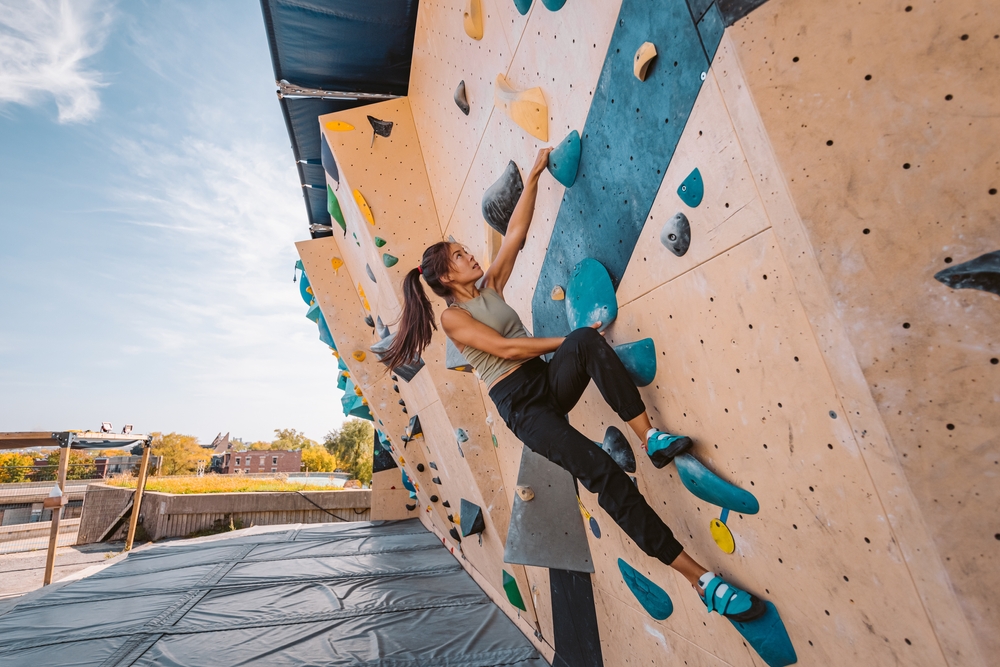Have all the rock climbing documentaries inspired you to get out and try it yourself? Well, you’re in luck! This guide will take you from your couch to bouldering in just a week! Although it’s a form of rock climbing, bouldering doesn’t require bulky equipment or in-depth knowledge of knots and safety like traditional rock climbing, making it perfect for beginners. In fact, since climbers only go 15 feet high, they rely on crash pads and spotters on the ground for safety instead of rope! Don’t worry, though, we’ll be scaling El Capitan by the end of the month. Baby steps.
STEP 1: PRE-CLIMB TRAINING
Since you’ll be climbing your way up rocks and walls, it’s important to make sure your body is ready. One of the most important things to focus on is your grip strength. Try the Plate Pinch exercise to get started.
Stand tall and place a weight plate in your hand, with your fingers somewhat straight on one side and your thumb compressed on the other. Press against the plate as if you were trying to touch the tip of your thumb to the tips of your fingers.
STEP 2: THE GEAR
While bouldering is a minimalistic style of rock climbing, it still requires a bit of gear.
INDOOR
All you need is a sturdy pair of rock-climbing shoes and a chalk bag. When picking out a pair of rock-climbing shoes, choose to downsize for added stability and friction. It’s important to find a pair that fits snugly but won’t be painful to wear.
OUTDOOR
Outdoor climbers require rock- climbing shoes, a chalk bag and several crash pads. Climbing partners who can spot you are always a must.
STEP 3: BEGINNING TO CLIMB
There are two things you have to do before each climb.
1. Warm up your forearms and fingers.
When you climb, you engage small muscles in your forearms, hands and fingers that you may otherwise never use. It’s incredibly important to warm up and address every strain, ache and pain as it arises. Use climbing tape to buddy tape and brace injured fingers, and know when to call it quits.
2. Study and know the climbing route.
Climbing routes are called problems because they’re approached like math problems, each with a solution to be reached. Always study the problem and envision the many ways that you could climb it.
STEP 4: WATCH AND LEARN
Climbing is a community-centric sport, and other climbers are often generous with their knowledge. Most of what you’ll learn about technical movements will be from watching others climb.

STEP 5: PROGRESSION
Like everything in life, progress in bouldering takes a lot of work and dedication.
Fortunately, bouldering makes the work fun and is a great way to get active! Every step of your bouldering journey will be filled with victories and successes that make the journey to mastery a rocking good time.


